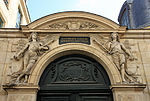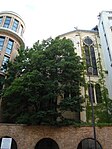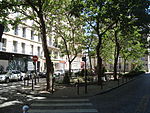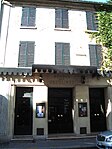Chimie ParisTech

Chimie ParisTech (officially École nationale supérieure de chimie de Paris (National Chemical Engineering Institute in Paris), also known as ENSCP or Chimie Paris), founded in 1896 within the University of Paris, is an engineering school and a constituent college of PSL Research University specialised in chemical science. It is located in the 5th arrondissement of Paris. Most of the students enter the school after highly competitive exams known as the Concours commun Mines-Ponts, following at least two years of classes préparatoires. There is also a small number of excellent students from French universities admitted to the school. Chimie ParisTech is known as France's most selective chemical engineering collegeThe school is a research center hosting ten laboratories which conduct high level research in various fields of chemistry.
Excerpt from the Wikipedia article Chimie ParisTech (License: CC BY-SA 3.0, Authors, Images).Chimie ParisTech
Rue d'Ulm, Paris 5th Arrondissement (Paris)
Geographical coordinates (GPS) Address Website Nearby Places Show on map
Geographical coordinates (GPS)
| Latitude | Longitude |
|---|---|
| N 48.843888888889 ° | E 2.3436111111111 ° |
Address
Université PSL - Quartier latin
Rue d'Ulm 46
75005 Paris, 5th Arrondissement (Paris)
Ile-de-France, France
Open on Google Maps







